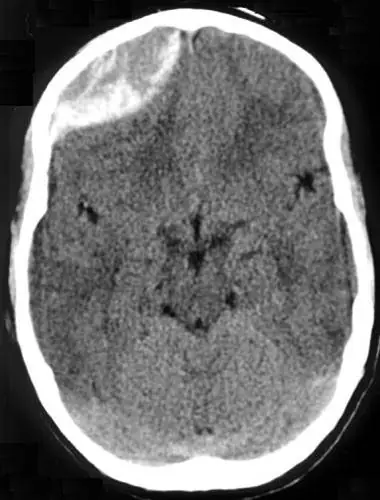Cooling for Traumatic Brain Injuries
When someone is involved in an auto accident, there are a lot of different injuries that they could sustain. One potentially fatal injury is a traumatic brain injury. This can occur when someone strikes their head on the pavement, collides with the dashboard, or if they strike the window or the door. The complications of a traumatic brain injury can be quite serious and every year, countless families are ripped apart as a result of a head or brain injury. According to statistics that have been published by the Brain and Spinal Cord:
- Over 25,000 people between the ages of 0 and 14 are killed by a traumatic brain injury every year
- Close to 500,000 children visit an emergency department because of symptoms that could indicate a head or brain injury
- About 37,000 children are hospitalized every year because of a traumatic brain injury
These statistics demonstrate just how dangerous a traumatic brain injury can be. When someone has been involved in a serious accident and has symptoms that are suggestive of a traumatic brain injury, rapid diagnosis and treatment is crucial to ensuring that the individual has the best chance possible at making a full recovery. One potential, new treatment that could save lives is therapeutic hypothermia, or cooling of the body. How does this work and how can this improve the prognosis of a traumatic brain injury?
Therapeutic Hypothermia for a Traumatic Brain Injury
When someone has injured their head or neck area, there is a cascade of responses that the body triggers that often lead to an increased temperature. This can happen when an infection sets in, when soft tissue such as brain matter is harmed, or when the bones are broken. When the temperature increases, the brain tissue tends to swell. This can lead to a dramatic increase in the intracranial pressure and may lead to an intracerebral herniation which may ultimately be fatal. Therefore, one of the possible therapies to prevent this from happening is to decrease the body’s temperature. According to studies, this can be helpful and improve someone’s prognosis. The thought process behind this is that if the brain’s temperature is cooled to normal (or below normal), that the brain swelling can be reduced and lower any chances of the brain suffering a herniation. Based on research, it is also helpful to implant an intracerebral pressure monitoring device. This will monitor the pressure inside of the brain and help doctors make decisions regarding how far to drop the brain’s temperature. While lowering the intracranial pressure and reducing the swelling is good, hypothermia can have dangerous consequences. Therefore, the temperature should only be dropped far enough to reduce the intracranial pressure to safe limits. While more research is needed, cooling could be a promising way to improve outcomes following a traumatic brain injury.
Related Articles
Brain Injury Lawyer in East Sacramento
I’m Ed Smith, an East Sacramento Brain Injury Lawyer. The increased intracranial pressure that follows a traumatic brain injury could be fatal. If you or a loved one has sustained head or neck trauma in an accident with a negligent person, please contact me for free, friendly advice at (916) 921-6400 or (800) 404-5400.
I’m a member of the Million Dollar Advocates Forum.
I encourage all of my visitors to read our verdicts and settlements.
Reviews by past clients from other cases are on Avvo, Yelp, and Google.
Image Attribution: The image from the top was found and used with permission from Unsplash.
:dr [cs 604] cv

